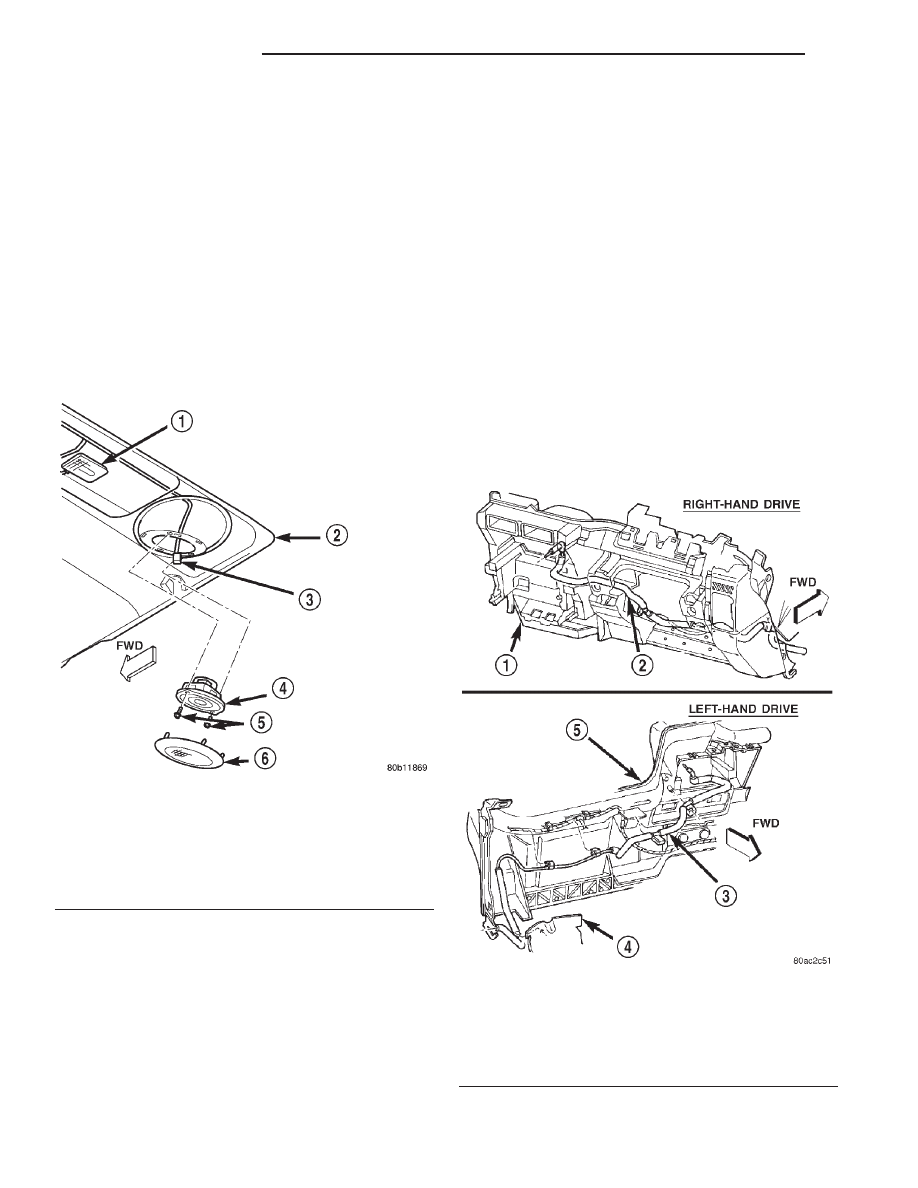Jeep XJ. Manual - part 109

(6) Reverse the removal procedures to install.
Tighten the mounting screw to 2.2 N·m (20 in. lbs.).
REAR HEADLINER
The rear headliner speakers can be serviced with-
out removing the headliner using the procedures that
follow. The headliner speaker support structure is
integral to the headliner assembly. Refer to Group 23
- Body for the headliner service procedures.
(1) Disconnect and isolate the battery negative
cable.
(2) Using a trim stick or another suitable wide
flat-bladed tool, gently pry around the perimeter
edge of the rear headliner speaker grille to release
the five snap retainers that secure the grille to the
headliner speaker support structure (Fig. 11).
(3) Remove the speaker grille from the headliner.
(4) Remove the two screws that secure the speaker
to the headliner speaker support structure.
(5) Lower the speaker from the headliner far
enough to access and unplug the speaker wire har-
ness connector.
(6) Remove the speaker from the headliner.
(7) Reverse the removal procedures to install.
Tighten the mounting screws to 2.2 N·m (20 in. lbs.).
ANTENNA
WARNING: ON VEHICLES EQUIPPED WITH AIR-
BAGS,
REFER
TO
GROUP
8M
-
PASSIVE
RESTRAINT SYSTEMS BEFORE ATTEMPTING ANY
STEERING
WHEEL,
STEERING
COLUMN,
OR
INSTRUMENT PANEL COMPONENT DIAGNOSIS OR
SERVICE. FAILURE TO TAKE THE PROPER PRE-
CAUTIONS COULD RESULT IN ACCIDENTAL AIR-
BAG DEPLOYMENT AND POSSIBLE PERSONAL
INJURY.
(1) Disconnect and isolate the battery negative
cable.
(2) Remove the right front fender inner splash
shield. Refer to Group 23 - Body for the procedures.
(3) Reach under the right end of the instrument
panel to unplug the antenna coaxial cable connector
(Fig. 12). Unplug the connector by pulling it apart
while twisting the metal connector halves. Do not
pull on the cable.
Fig. 11 Rear Headliner Speaker Remove/Install
1 – CARGO LAMP
2 – HEADLINER
3 – WIRE HARNESS CONNECTOR
4 – SPEAKER
5 – SCREWS
6 – SPEAKER GRILLE
Fig. 12 Antenna Cable Routing
1 – INSTRUMENT PANEL
2 – ANTENNA COAXIAL CABLE
3 – ANTENNA COAXIAL CABLE
4 – HEATER-A/C HOUSING KICK COVER
5 – INSTRUMENT PANEL
8F - 10
AUDIO SYSTEMS
XJ
REMOVAL AND INSTALLATION (Continued)